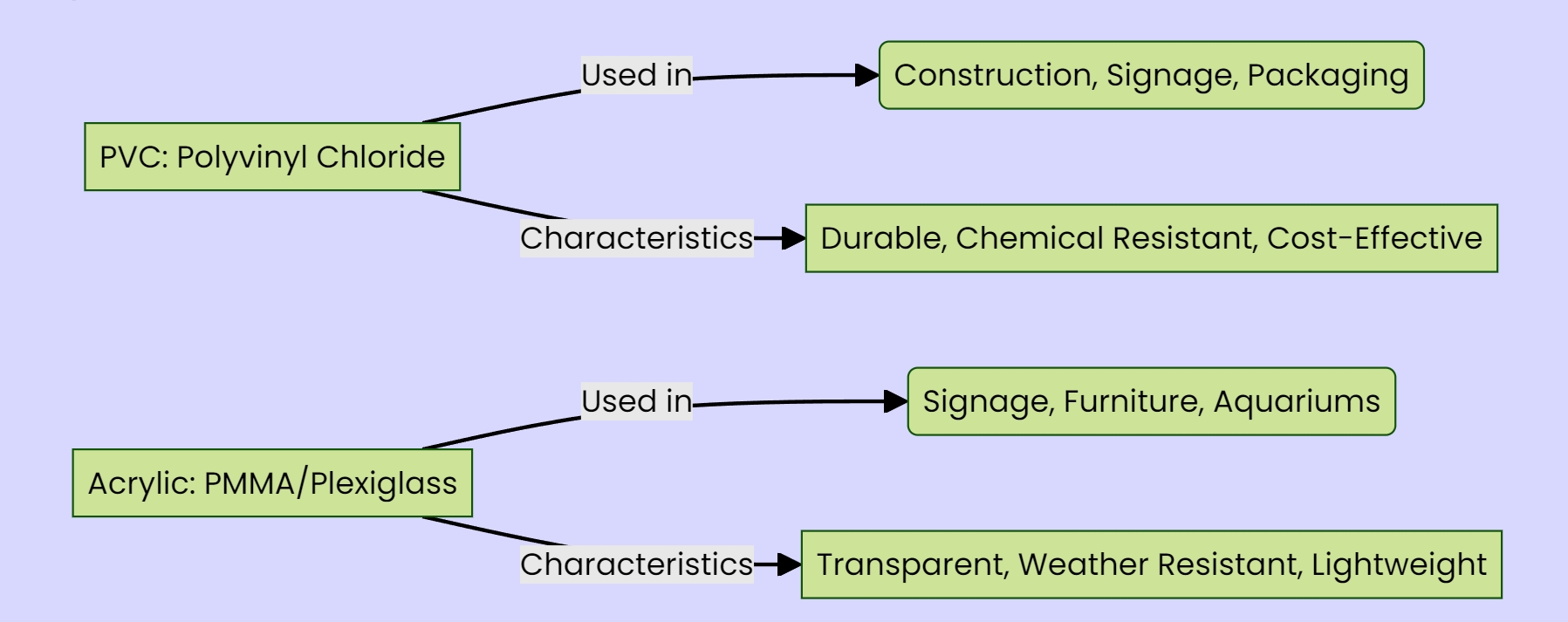Understanding the Difference Between PVC and Acrylic
Understanding the Difference Between PVC and Acrylic
In the realm of design and construction materials, PVC and acrylic are two commonly used substances that serve distinct purposes. Understanding the differences between PVC and acrylic is crucial for making informed decisions when it comes to selecting the right material for your project. In this comprehensive guide, we will delve into the unique characteristics of PVC and acrylic, highlighting their properties, applications, and advantages.
PVC (Polyvinyl Chloride)
PVC, or Polyvinyl Chloride, is a synthetic plastic polymer that is widely utilized in various industries due to its versatility and durability. PVC is known for its exceptional strength, chemical resistance, and affordability, making it a popular choice for a wide range of applications.
Properties of PVC:
Durability: PVC is highly durable and can withstand harsh environmental conditions, making it ideal for outdoor use.
Chemical Resistance: PVC is resistant to chemicals, acids, and alkalis, ensuring longevity in challenging environments.
Cost-Effective: PVC is a cost-effective material compared to other plastics, making it a budget-friendly option for many projects.
Applications of PVC:
Construction: PVC is commonly used in construction for pipes, fittings, and profiles due to its strength and corrosion resistance.
Signage: PVC sheets are popular for signage and displays due to their versatility and ease of customization.
Packaging: PVC is used in packaging materials such as bottles, films, and containers due to its durability and flexibility.
Acrylic
Acrylic, also known as PMMA (Polymethyl Methacrylate) or Plexiglass, is a transparent thermoplastic that offers excellent optical clarity and weather resistance. Acrylic is valued for its aesthetic appeal and versatility in various applications.
Properties of Acrylic:
Transparency: Acrylic boasts exceptional transparency, making it an ideal substitute for glass in many applications.
Weather Resistance: Acrylic is highly resistant to UV radiation and weathering, making it suitable for outdoor use.
Lightweight: Acrylic is lightweight yet durable, making it easy to handle and install in different projects.
Applications of Acrylic:
Signage and Displays: Acrylic is commonly used for signage, displays, and decorative elements due to its clarity and impact resistance.
Furniture: Acrylic furniture pieces are popular for their modern aesthetic and durability.
Aquariums: Acrylic aquariums are preferred over glass for their clarity, impact resistance, and lightweight nature.
PVC vs. Acrylic: A Comparison
When deciding between PVC and acrylic for your project, consider the following factors:
PVC
Strength and Durability: PVC is known for its strength and chemical resistance, making it suitable for demanding applications.
Cost: PVC is generally more cost-effective than acrylic, making it a budget-friendly option for large-scale projects.
Acrylic
Aesthetics: Acrylic is prized for its transparency and modern aesthetic, making it a popular choice for design-oriented projects.
Material Comparison
graph LR A[PVC] -- Durable --> B A -- Chemical Resistant --> B A -- Cost-Effective --> B B[Acrylic] -- Transparent --> C B -- Weather Resistant --> C B -- Lightweight --> C

By weighing the strengths and weaknesses of PVC and acrylic, you can select the material that best aligns with your project goals and specifications. Whether you prioritize durability, aesthetics, or cost-efficiency, choosing the right material is essential for the success of your design endeavors.
















